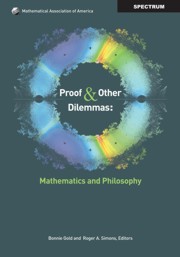Book contents
- Frontmatter
- Contents
- Acknowledgments
- Introduction
- I Proof and How it is Changing
- II Social Constructivist Views of Mathematics
- III The Nature of Mathematical Objects and Mathematical Knowledge
- 7 The Existence of Mathematical Objects
- 8 Mathematical Objects
- 9 Mathematical Platonism
- 10 The Nature of Mathematical Objects
- 11 When is One Thing Equal to Some Other Thing?
- IV The Nature of Mathematics and its Applications
- Glossary of Common Philosophical Terms
- About the Editors
10 - The Nature of Mathematical Objects
from III - The Nature of Mathematical Objects and Mathematical Knowledge
- Frontmatter
- Contents
- Acknowledgments
- Introduction
- I Proof and How it is Changing
- II Social Constructivist Views of Mathematics
- III The Nature of Mathematical Objects and Mathematical Knowledge
- 7 The Existence of Mathematical Objects
- 8 Mathematical Objects
- 9 Mathematical Platonism
- 10 The Nature of Mathematical Objects
- 11 When is One Thing Equal to Some Other Thing?
- IV The Nature of Mathematics and its Applications
- Glossary of Common Philosophical Terms
- About the Editors
Summary
From the Editors
As we work on a mathematical problem, the mathematical objects we are working with seem very real and concrete. For example, when they do not behave as we had expected, they certainly seem quite objective and separate from our internal thoughts. As a result, many mathematicians tend toward a platonist/realist view of mathematical objects, at least until the problems with platonism are voiced. In this chapter, Øystein Linnebo attempts to resolve some of those problems by looking carefully at the language we use when referring to mathematical objects.
In ordinary speech, when we say “that's merely a semantic distinction,” we mean that there is no real difference—they are just two different ways of saying the same thing. But for philosophers, questions of semantics—what words mean and how they are used—are essential to unraveling many apparent disagreements or contradictions. Mathematicians, for example, generally are indifferent to the distinction between numbers and numerals (or tend to resolve them, as Errett Bishop did, by saying “I identify a number with its numeral”). But paradoxes appear when one is not careful about the distinction between an object and its name. In this chapter, Linnebo uses this distinction in his attempt to resolve some of the problems plaguing those who would like to view mathematical objects as objective.
- Type
- Chapter
- Information
- Proof and Other DilemmasMathematics and Philosophy, pp. 205 - 220Publisher: Mathematical Association of AmericaPrint publication year: 2008



